SCIENCE
Mysterious breeding habits of aquarium fish vex experts
Published
2 years agoon
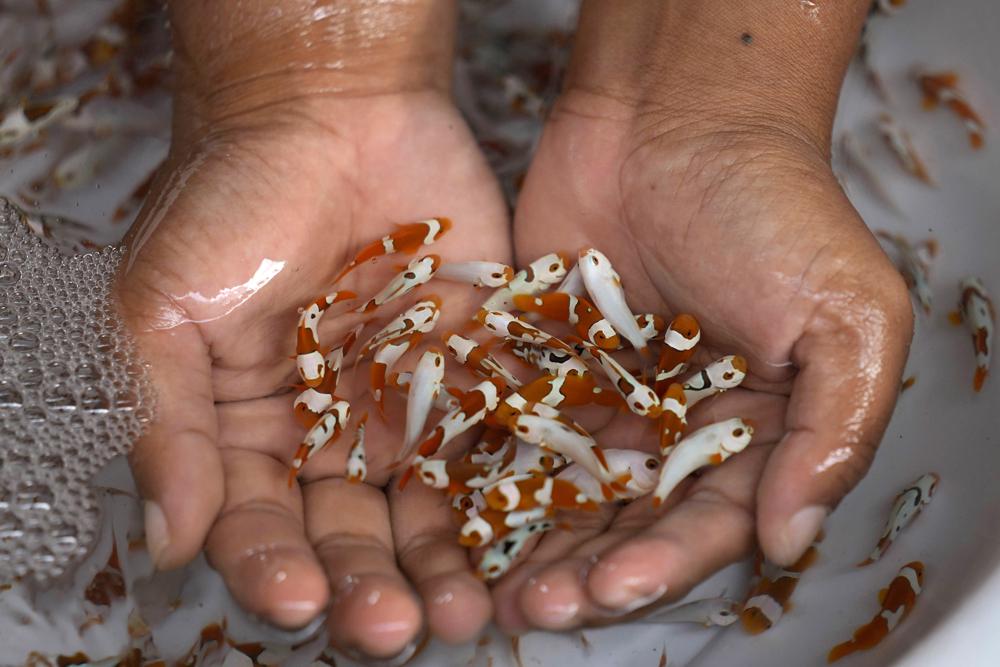
PENYABANGAN, Indonesia (AP) — It took a broken air conditioner for Tom Bowling to figure out — after nearly eight months of failure — how to breed the coveted pink-yellow tropical fish known as blotched anthias.
Bowling, an ornamental fish breeder based in Palau, had kept the fish in cool water, trying to replicate the temperatures the deep-water creatures are usually found in. But when the air conditioner broke the water temperature rose by a few degrees overnight — with surprising results. “They started spawning — they went crazy, laying eggs everywhere,” said Bowling.
Experts around the world tinker over water temperature, futz with lights, and try various mixes of microscopic food particles in hopes of happening upon the particular and peculiar set of conditions that will inspire ornamental fish to breed. Experts hope to steer the aquarium fish trade away from wild-caught fish, which are often caught with poisons that can hurt coral ecosystems.
PROPER AMBIANCE REQUIRED
Most of the millions of glittering fish that dart around saltwater aquariums in the U.S., Europe, China and elsewhere are taken from coral reefs in the Philippines, Indonesia and other tropical countries.
Trappers often stun them using chemicals like cyanide. They are then transferred to middlemen and then flown across the globe, ending up in aquariums in homes, malls, restaurants and medical offices. Experts estimate “large percentages” die on the way.
Part of the problem: only about 4% of saltwater aquarium fish can be bred in captivity, largely because many have elaborate reproductive cycles and delicate early life stages that require sometimes mysterious conditions that scientists and breeders struggle to reproduce.
For decades experts have been working to unlock the secrets of marine fish breeding. Breakthroughs don’t come quickly, said Paul Andersen, head of the Coral Reef Aquarium Fisheries Campaign, which works to support sustainable coral reef aquarium fisheries.
“It requires years of investment, research and development, oftentimes to make incremental steps,” he said. And then even longer, he said, to bring newly captive-bred species to market.
The Moorish idol, a black-and-yellow striped fish with a mane-like dorsal fin spine, requires lots of space. Squiggle-striped green mandarins prefer to spawn just before the sun sets, requiring very particular lighting cycles to breed in captivity. As Bowling discovered in Palau, blotched anthias require very specific temperatures.
“You’ve got to pay attention to all the parameters that will make a fish happy,” said Andersen. “Some species are really gentle, delicate and sensitive to these kinds of things.”
FRAGILE EARLY DAYS
After fish spawn, breeders often find themselves facing the most challenging part of the process: the larval period, which is the time just after the fish hatches, before it develops into a juvenile. The flow of water has to be just right, but they are so fragile they have to be protected from filters and even tank walls.
The first feeding is also crucial, said Andrew Rhyne, a marine biology professor at Roger Williams University in Rhode Island. During the first days many larval fish don’t have eyes or mouths, instead living off their yolk.
“When they finally do form eyes or mouths it’s so important to have created an environment that allows them to get a first bite of zooplankton so they can get a little stronger and continue to grow,” said Rhyne. “That’s kind of been the magic for all of this.”
Often that first bite is a critical part of the ocean food system that harbors its own mysteries: called copepods, they are microscopic crustaceans that provide vital nutrients to larval fish and are key for breeders around the world.
At the University of Florida Tropical Aquaculture Laboratory in Ruskin — where the blue tang “Dory” fish popularized by the movie Finding Nemo was successfully bred for the first time — associate professor Matt DiMaggio and his students have been working to produce copepods. But even the copepods haven proven to be difficult to raise.
Mort than 10,000 miles away from the Florida lab, on the tropical northern coast of Bali, Indonesia, renowned fish breeder Wen-Ping Su walks between large cement fish tanks, his own zooplankton recipe churning in a circular tank nearby.
Su said he has 10 different keys to success that he’s been developing for nearly two decades. Those keys have enabled him to breed fish that no one else has, including striped regal angelfish and frilly black-bodied, orange-rimmed pinnatus batfish.
VALUABLE SECRETS
But asking Wen-Ping Su if he’ll share details, his answer comes quickly, with his hands crossing to form an X in front of his big smile: “No.”
It’s the same sentiment echoed by Bowling, who pauses when asked about sharing the secrets to his most high-profile successes. “That’s the part I really don’t want to tell you,” he laughs.
Those secrets are their livelihoods. The blotched anthias Bowling bred after the broken air conditioner are listed for $700 on his company’s website. Fish bred by Su also sell for hundreds of dollars online.
But in the past five years there are some organizations — such as Rising Tide Conservation, a non-governmental organization dedicated to developing and promoting aquaculture — that have worked to promote information sharing, said DiMaggio.
“That’s helped to accelerate the number of species that we’ve been able to raise in during that time and the variety of species too,” he said, highlighting species such as wrasses, butterflyfish and tangs.
Rhyne’s research lab — which includes breeding toothy queen triggerfish and red-striped yasha gobies— has been working to share his research with breeders as well.
But Rhyne and other breeders concede that it’s unlikely all aquarium fish will be raised in captivity because some are just too difficult, while others are so abundant in nature.
And breeding a fish doesn’t guarantee it will make it to or do well on the market, said Rhyne. Captive bred fish cost more, and experts in the fish industry recognize that it will take time to convince consumers should pay more for them.
“How do we market aquaculture fish the way that we market organic foods, you know, and demand that premium price point?” said Andersen, from the Coral Reef Aquarium Fisheries Campaign. “The marketing is really important.”
SCIENCE
Ohio chemical disaster may hold long-term health risks – experts
Published
1 year agoon
March 2, 2023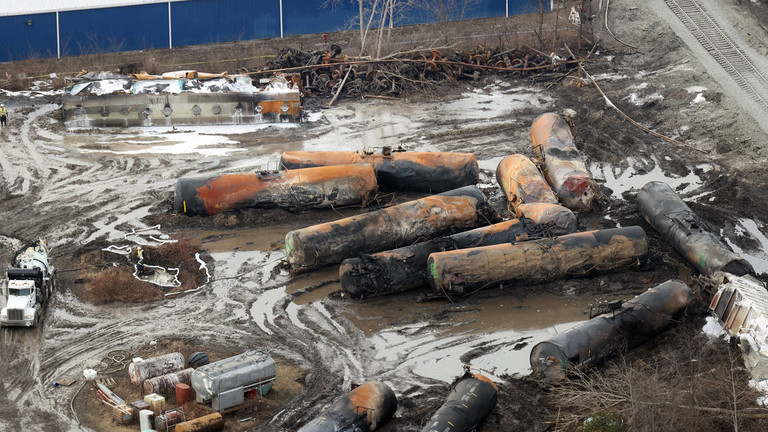
East Palestine residents remain “in constant contact” with toxic pollutants, a US scientist says
The pollutants in the air of East Palestine, Ohio, may pose long-term health risks, scientists from Texas A&M and Carnegie Mellon University claimed on Wednesday. Their assessment contrasts the US Environmental Protection Agency’s (EPA) assurance that the pollution does not pose an immediate health risk.
Dr. Albert Presto, an associate research professor at Carnegie Mellon University, told CNN on Wednesday that the situation in East Palestine was not an “immediate health concern” but that it could still pose long-term risks as the researchers had no way of telling how long the hazardous chemical concentration would persist. He added that the residents of the city were in “constant contact” with the pollutants and there was no clear understanding of what that level of exposure would mean for the population’s health.
The air in the Ohio city was contaminated in early February, after 38 cars of a Norfolk Southern freight train derailed and spilled out the hazardous materials they were carrying. The accident caused a fire that went on for multiple days and intensified the airborne spread of the chemical pollution, causing a mandatory evacuation of the nearby residents. The EPA has been conducting various tests and measurements in the affected area, claiming there was no immediate risk to the local population.
Another train derails after Ohio chemical spill
Texas A&M and Carnegie Mellon presented their independent assessment in a Twitter post last week. The scientists claim to have used data compiled by the EPA and found that nine of the 50 chemicals found in East Palestine’s air were above the norm for the region. In particular, the report singles out acrolein, a toxic substance used to control plants, algae, rodents and microorganisms.
The EPA responded to the claims in the report from the two universities by dismissing the perceived risks. A spokesperson for the agency told CNN on Monday that the report assumed “a lifetime of exposure, which is constant exposure over approximately 70 years” for the harmful effects to manifest. They added: “EPA does not anticipate levels of these chemicals will stay high for anywhere near that.”
Dr. Ivan Rusyn, the director of the Texas A&M University Superfund Research Center and part of the team that did the analysis, told CNN on Wednesday that “all sides were right” as both parties simply needed to keep monitoring the situation and “do a better job communicating the results.”
PLEASANT MUSIC FOR YOUR CAFE, BAR, RESTAURANT, SWEET SHOP, HOME
SUITABLE MUSIC FOR YOGA LOVERS
SCIENCE
Seismologist behind Türkiye quake prediction issues another warning
Published
1 year agoon
March 1, 2023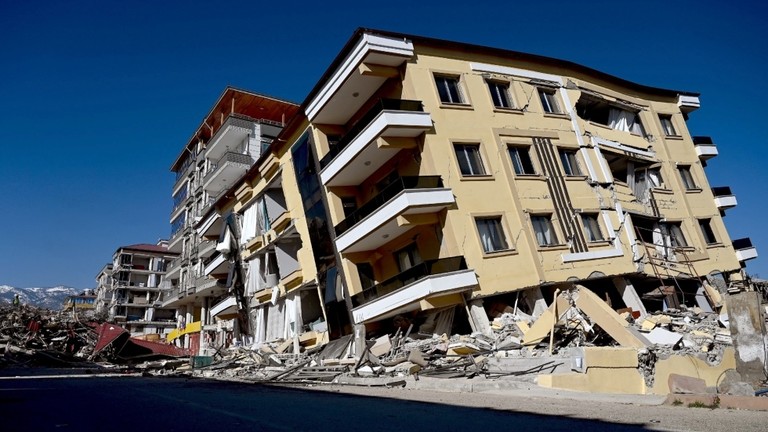
Dutch seismologist Frank Hoogerbeets, who rose to international prominence after predicting the devastating earthquakes in Türkiye and Syria last month, has said that the world could be hit with another major quake in the coming days.
Hoogerbeets, who makes his forecasts based on the motions of celestial bodies, published a video on YouTube on Monday in which he warned that “the first week of March is going to be extremely critical.”
“A convergence of critical planetary geometry around March 2 and 5 may result in large to very large seismic activity, possibly even a mega-thrust earthquake around March 3 and 4 and/or March 6 and 7,” the description to the clip read.
In the video itself, the seismologist claimed that the power of the supposed impending quake “may be well over 8 magnitude.”
The affected area could stretch thousands of kilometers, from the Kamchatka Peninsula and the Kuril Islands in Russia’s Far East, all the way down to the Philippines and Indonesia, Hoogerbeets said.
Costs from Türkiye’s massive quake rising
“I’m not exaggerating. I’m not trying to create fear. This is a warning,” insisted the scientist, who works at the Solar System Geometry Survey (SSGEOS).
The head of the Kamchatka branch of the Geophysical Survey of Russia’s Academy of Sciences, Danila Chebrov, has questioned Hoogerbeets’ predictions and described him as an “amateur.” The connection between the movements of the planets in the solar system and seismic activity on Earth “is rather weak, and it’s problematic to use it as the main prognostic tool,” Chebrov explained.
On February 3, Hoogerbeets issued a tweet that read: “Sooner or later there will be a magnitude 7.5 earthquake in this region (South-Central Turkey, Jordan, Syria, Lebanon).”
Three days later, a 7.8 magnitude quake struck Türkiye and Syria. The disaster has caused the deaths of more than 50,000 people, with powerful aftershocks continuing in the region to this day.
Dutch seismologist Hoogerbeets has made predictions down the years which didn’t come true. Commenting on his work earlier this month, Susan Hough of the US Geological Survey insisted that no scientist has “ever predicted a major earthquake.” Hough told NPR that the spot-on forecast for the quakes in Türkiye and Syria was just a coincidence. “It’s the stopped clock that’s right twice a day, basically,” she said.
PLEASANT MUSIC FOR YOUR CAFE, BAR, RESTAURANT, SWEET SHOP, HOME
SUITABLE MUSIC FOR YOGA LOVERS
SCIENCE
Turkish quakes may be ‘rehearsal’ for big one in Istanbul – scientists
Published
1 year agoon
February 17, 2023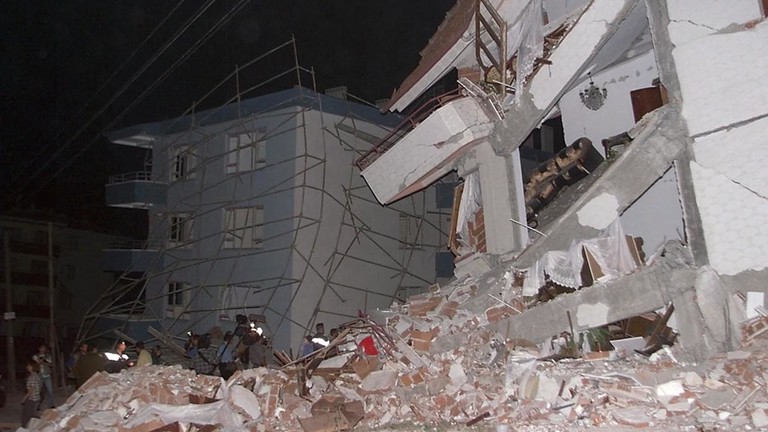
A local newspaper cites experts warning of a potential catastrophe if an earthquake hits the country’s biggest city
Istanbul should prepare itself for a powerful quake, scientists and public figures have warned. This month’s disaster in southern Turkey, which claimed tens of thousands of lives, is a “rehearsal” for what could come next, they argued in the newspaper Hurriyet on Friday.
When the next Istanbul earthquake happens, the damage “will swallow everyone,” unless people drop their differences and work on improving the seismic resilience of the city, Turkish author Nedim Sener wrote.
He cited a risk assessment by Bogazici University’s quake research lab, which counted how many buildings would be impacted by an earthquake of 7.5+ magnitude in Türkiye’s most populous and economically vital hub. With almost 13,500 structures expected to be heavily damaged, and hundreds of thousands of others affected to a smaller degree, the loss of life would be greater than what the country has just experienced, Sener predicted.
Some Turkish officials, including Istanbul Mayor Ekrem Imamoglu, have voiced similar concerns. The head of the city administration said 90,000 structures were at risk of total collapse in case of a major earthquake, citing a fresh survey by his municipality.
Cost of Türkiye quake damage estimated
Speaking in a TV interview this week, Imamoglu criticized the central government for issuing an amnesty to some 317,000 buildings which failed to meet earthquake resilience codes. It meant that the owners were allowed to pay a fine rather than demolish their properties.
Istanbul is located near a tectonic fault line that passes under the Marmara Sea. The 1999 quake in Izmit, which killed over 17,000 people, struck some 80 kilometers east of the city center, and half that distance from its easternmost suburbs.
Turkish Seismologist Naci Gorur, from Istanbul Technical University, warned that the risk of a major quake hitting Istanbul in the near future was growing. The probability of a tremor measuring over 7 magnitude occurring near the city within 30 years has increased from 62% in the aftermath of the 1999 disaster to 80% now, he said during a TV appearance. The scientists cited calculations by Tom Parsons, a fellow researcher at the US Geological Survey.
The twin quakes on February 6 caused massive devastation in Türkiye and northern Syria. Their combined death toll is estimated at around 44,000, including over 38,000 on the Turkish side.
SUITABLE MUSIC FOR YOGA LOVERS
PLEASANT MUSIC FOR YOUR CAFE, BAR, RESTAURANT, SWEET SHOP, HOME



Global debt balloons to record highs

German military to sell tons of toilet paper

First female Saudi astronaut heads to space

Nigeria takes step to combat fuel shortages

US will default if debt deal fails – treasury secretary

Village People demand Trump stop using their music

Hollywood star pulls out of hosting awards show amid strike

Rock icon slams German authorities

Agatha Christie novels chopped by ‘sensitivity readers’ – media

Marvel star back in training after breaking over 30 bones

Turkish minister escapes fire blast (VIDEO)

Trump savages pop star’s Super Bowl performance

Alec Baldwin sued by Ukrainian family of slain cinematographer

Duran Duran stumbles, Dolly Parton rolls into Rock Hall

Sweden probes possible plot behind Russian pipeline leaks

FINANCE


Global debt balloons to record highs
It’s now $45 trillion higher than its pre-pandemic level and is expected to continue growing rapidly, a top trade body...
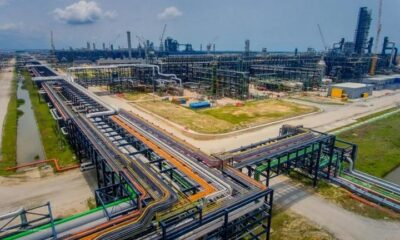

Nigeria takes step to combat fuel shortages
The West African country has built a giant oil refinery to cover domestic demand Nigeria will commission its new Dangote...


US will default if debt deal fails – treasury secretary
The current borrowing limit is a constraint on Washington’s ability to meet its obligations, Janet Yellen insists America’s chances of...


Facebook parent Meta fined €1.2 billion by Irish watchdog
The American tech company has been accused of violating EU data privacy rules US tech giant Meta has been hit...


UK’s business with sanctioned country booming
Trade between Britain and Iran has reached the highest level in a decade, according to official data, apparently having been...

POLITICS


Erdogan election defeat would be ‘revenge’ – Syrian Kurds
The YPG claims the Turkish president failing to win another term would be payback for Ankara’s counter-terrorism operations in Syria...


Chinese special envoy meets with Zelensky
Li Hui visited Kiev to share Beijing’s views on a political settlement to the Ukraine crisis Ukrainian President Vladimir Zelensky...


Pakistan’s top court orders release of former PM Imran Khan
Pakistan’s Supreme Court has ordered the release of former prime minister Imran Khan, whose arrest earlier this week triggered deadly...


Kamala Harris to run AI taskforce
The US vice president will ask AI execs to evaluate the safety and fairness of their models US Vice President...


Most Americans want to move on from Biden and Trump – poll
70% of respondents said the incumbent shouldn’t bid for office in 2024, with that figure 60% for the Republican former...

OPINION


Disgraced ex-PM Liz Truss seeks to ruin any hopes for normal UK-China ties
The former premier’s Taiwan trip is nothing but a provocation for Beijing to lash out at London, sinking any constructive...


India facing challenge to steer SCO agenda away from Western-dominated frameworks
The Shanghai Cooperation Organisation is looking at ways to address the most pressing global issues without being a disruptive influence...


China isn’t the biggest threat to Italy’s prosperity
Rome is considering leaving the Belt and Road Initiative in a move which will place virtue signaling to other Western...


Meet the Czech lawyer who rallies thousands to shake up the EU establishment
In mid-April, a fledgling political party that recently formed in the Czech Republic called Pravo Respekt Odbornost (Law Respect Expertise;...


UK shows signs of good will to China, but it’s not the one calling the shots in this relationship
The British foreign secretary says antagonizing Beijing goes against London’s ‘national interests’, but Washington has other ideas British Foreign Secretary...

LIFE
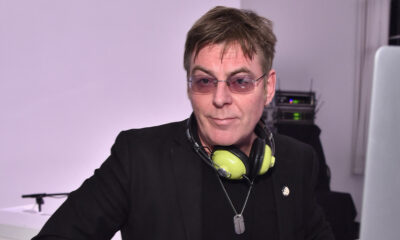

conic Smiths bassist dies aged 59
The bassist with legendary English rock band The Smiths, Andy Rourke, has died at the age of 59, the group’s...


Village People demand Trump stop using their music
A viral video emerged last week of Donald Trump dancing to a Village People song at his Florida estate Village...


Hollywood star pulls out of hosting awards show amid strike
Drew Barrymore is stepping down as host of this year’s MTV Movie & Music Awards, due to be held on...


Mexico condemns US ‘interference’ in drug war
The DEA’s infiltration of the Sinaloa Cartel without state permission amounts to espionage, the Mexican president says Mexican President Andres...


Rock icon slams German authorities
Pink Floyd co-founder Roger Waters criticized the city of Frankfurt for canceling his concert and vowed to take legal action...



Trending
-

 TECHNOLOGY12 months ago
TECHNOLOGY12 months agoHow much YouTube pays for 1 million views, according to creators
-

 FINANCE11 months ago
FINANCE11 months agoFacebook parent Meta fined €1.2 billion by Irish watchdog
-

 LIFE12 months ago
LIFE12 months agoHollywood star pulls out of hosting awards show amid strike
-

 LIFE11 months ago
LIFE11 months agoconic Smiths bassist dies aged 59
-
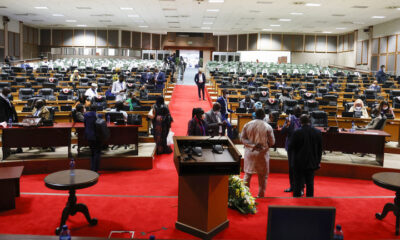
 NEWS11 months ago
NEWS11 months agoKenya supports creation of pan-African court
-

 FINANCE11 months ago
FINANCE11 months agoUS will default if debt deal fails – treasury secretary
-

 FINANCE11 months ago
FINANCE11 months agoGlobal debt balloons to record highs
-

 WAR11 months ago
WAR11 months agoUkraine won’t join NATO anytime soon – Scholz




